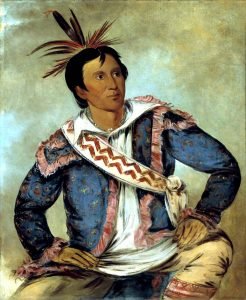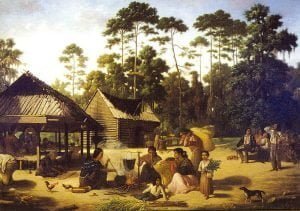Pitchlynn Choctaw Family – List of Mixed Bloods
The Pitchlynn Choctaw family, although represented by one of the smallest name lists in this study, has a long and noted history in the literature of the Old Southwest and Indian Territory (see Chart 18). The eldest Pitchlynn, Isaac, was still alive in 1804 although in ill health. His son, John Pitchlynn, Jr., is recorded as the Choctaw interpreter at the Treaty of Hopewell in 1786 and for nearly half a century was a respected and honored countryman in Choctaw country. John lived a long while on Old Woman’s Creek, a tributary of the Oknoxabee (or Noxobee) River which itself … Read more




